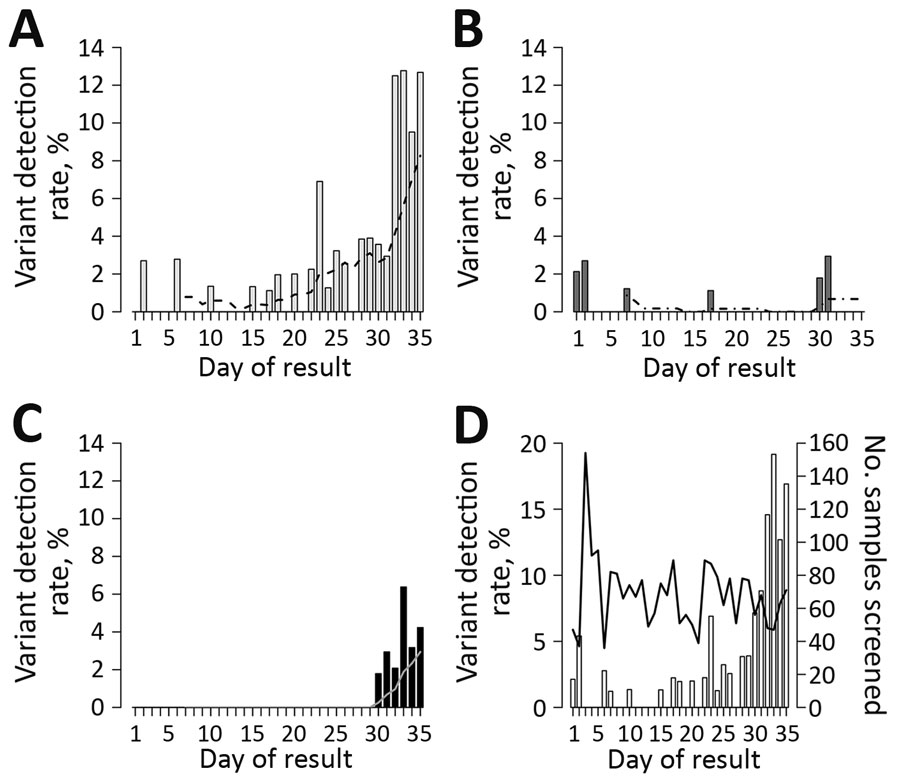Volume 27, Number 6—June 2021
Dispatch
Rapid Detection of SARS-CoV-2 Variants of Concern, Including B.1.1.28/P.1, British Columbia, Canada
Figure

Figure. Rate of detection of severe acute respiratory syndrome coronavirus 2 variants of concern, by day of result, January 26–March 1, 2021, with 7-day moving average. A) B.1.1.7 (UK); dashed line indicates 7-day moving average. B) B.1.351 (South Africa); dashed line indicates 7-day moving average; C) B.1.1.28/P.1 (Brazil),;solid line indicates 7-day moving average; D) all variants of concern; solid line indicates number of samples screened.
1These first authors contributed equally to this article.
Page created: March 30, 2021
Page updated: May 18, 2021
Page reviewed: May 18, 2021
The conclusions, findings, and opinions expressed by authors contributing to this journal do not necessarily reflect the official position of the U.S. Department of Health and Human Services, the Public Health Service, the Centers for Disease Control and Prevention, or the authors' affiliated institutions. Use of trade names is for identification only and does not imply endorsement by any of the groups named above.